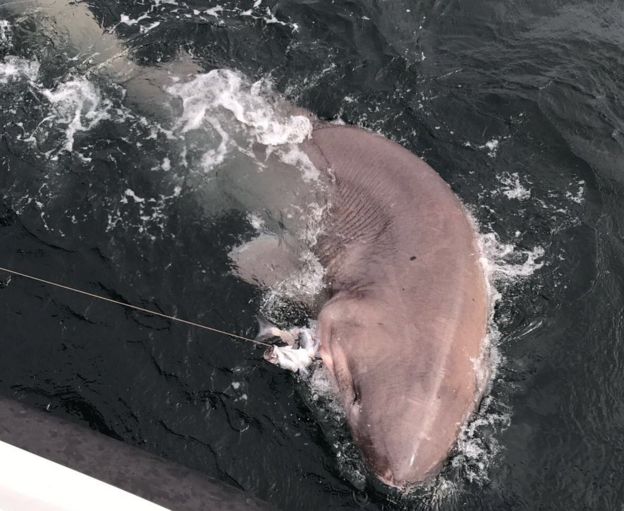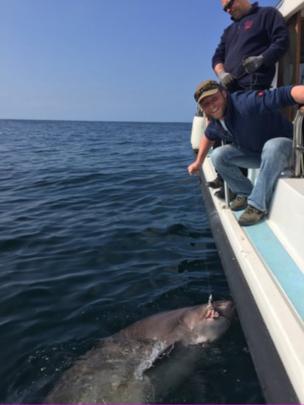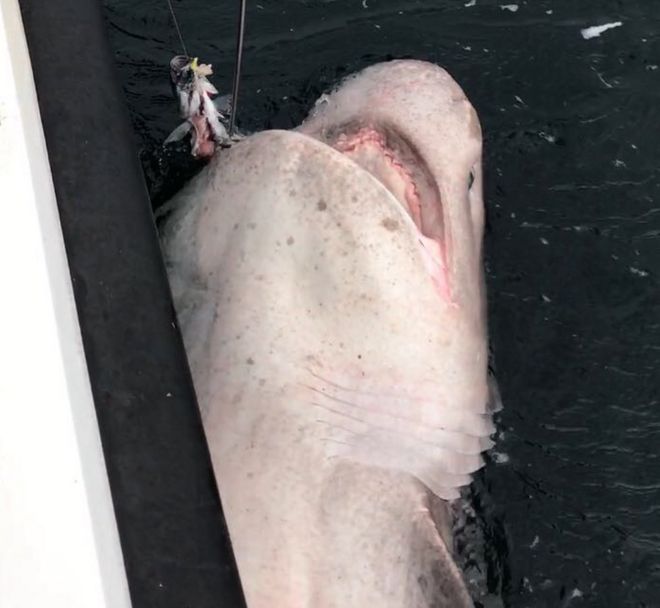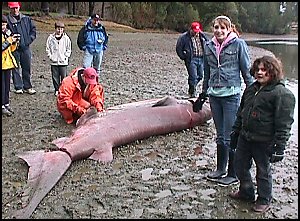|
|
Post by marsupial on May 30, 2018 5:29:28 GMT 5
The bluntnose sixgill shark is the biggest of the cow sharks, different sites say that they grow to 4.8 meters, 5.5 meters and some 8 meters. In Wikipedia( so it is not that reliable) it says that bluntnose sixgill sharks grows up to 26 feet or 8 meters and the biggest pup ever recorded is 482 cm. My question is how big do they actually grow to?
|
|
|
|
Post by Ceratodromeus on Mar 14, 2020 3:33:04 GMT 5
Thread is nearly two years old but i figured i'd weigh in on it. The supposed 8m figure from the wikipedia page cited from ⟶ www.bbc.com/earth/story/20161219-huge-deep-sea-shark-scavenges-foodIn which it is only briefly mentioned in one sentence at the top of the page "The eight-metre-long sixgill shark is almost never seen ". Not the most convincing aspect from the article as noted. As far as a 4.82m pup(!), that is extraordinarily dubious. Indeed, many of the aspects surrounding morphometrics on the wikipedia page have citation needed in the citation box for the claims within the article. However, not to put a dampening on the potential large body size of this species, a study was published in 2004 {1} that shed light on the morphometrics of this species, with excellent records on body size of captured animals from three different seas. From this paper, here is a ~4.5m female photographed after capture  And here is morphometric data from a relatively large sample of animals, alongside dietary notes and depths of which they were captured.    From this, i think we can tentatively say that maturity is reached at ~3.0-3.5m TBL between both sexes, with the largest animals potentially measuring ~6m and weighing ~600kg; as noted in the literature for the 5.5m female with a weight of 1000kg, this is probably an overestimated weight. The other records of ~700kg+ can be a result of pregnancy, food, or other variables such as overestimations as well. Very large animals, indeed. All of the data and information above is from {1}KABASAKAL, Hakan. "Preliminary observations on the reproductive biology and diet of the Bluntnose sixgill shark, Hexanchus griseus (Bonnaterre, 1788)(Chondrichthyes: Hexanchidae), in Turkish Seas." Acta Adriatica: international journal of Marine Sciences 45.2 (2004): 187-196. |
|
|
|
Post by elosha11 on Mar 14, 2020 20:38:58 GMT 5
Interesting. The sixgills sharks seems to broadly overlap great white sharks or tiger sharks in length, but are significantly lighter at equal lengths.
|
|
|
|
Post by Ceratodromeus on Mar 17, 2020 8:52:24 GMT 5
Indeed; while they do have girth on them, i don't think they are as heavy bodied as similarly length whites or tigers. This is an interesting case of a large sixgill caught off the Irish coast, while i do not believe it is the ~7.5m it is estimated to be in the article and by the fisherman, it is a rather large animal.    www.bbc.com/news/world-europe-39845225 www.bbc.com/news/world-europe-39845225 |
|
|
|
Post by elosha11 on Apr 9, 2020 8:09:30 GMT 5
@ceratodromeus. That's certainly a big fish story, in every sense of the word. Very large sixgill, but nowhere near 7.5 meters. Good find. Here's the other pic from the article.  |
|
|
|
Post by elosha11 on Apr 9, 2020 8:15:40 GMT 5
Henry Mollet has sixgill sizes documented on his website. www.elasmollet.org/Hg/Hg_large.htmlHere's a 14 foot one, a pregnant female in 2007.  Here's Mollet's notes about this specimen. |
|
|
|
Post by elosha11 on Apr 9, 2020 8:22:02 GMT 5
|
|
|
|
Post by 6f5e4d on Apr 9, 2020 10:21:41 GMT 5
Oh my, that's a big shark. Sixgills truly are rivaling the great white, even if they don't fully go past it.
|
|
|
|
Post by elosha11 on Apr 9, 2020 14:55:25 GMT 5
In length, yes, but they are not nearly as heavy.
|
|